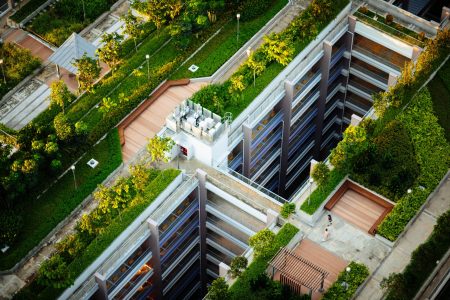Stormwater green infrastructure in the Mid-Atlantic USA
Use of vegetation in urban areas in the Mid-Atlantic watersheds of Washington DC, Montgomery County and Baltimore County MD, has reduced flooding and nutrient runoff. The ‘stormwater green infrastructure’ in these municipalities includes green roofs, bioswales, rain gardens and stormwater ponds. By increasing infiltration and groundwater recharge, and/or evaporation, they reduce the volume of run-off […] February 20, 2020
Use of vegetation in urban areas in the Mid-Atlantic watersheds of Washington DC, Montgomery County and Baltimore County MD, has reduced flooding and nutrient runoff. The ‘stormwater green infrastructure’ in these municipalities includes green roofs, bioswales, rain gardens and stormwater ponds. By increasing infiltration and groundwater recharge, and/or evaporation, they reduce the volume of run-off that can contribute to floods. A study found that the watersheds with more stormwater green infrastructure had less ‘flashy’ hydrology, with peak runoff being 44% lower (mm/day), and runoff events being 26% less frequent and 26% less variable. Taken together this suggests that the green infrastructure reduced the potential for flooding. Of the areas studied, DC had the greatest proportion of its landscape drained through green infrastructure, at 12.7%, whilst Baltimore County had the lowest, at 7.9%. Furthermore, the green infrastructure was shown to decrease nitrate export by 44%, hence likely decreasing nutrient pollution of rivers and consequent harm to wildlife.
The green infrastructure was found to have not caused a significant reduction in phosphorous exports or sewer overflows. This was likely because the scale of implementation was too small. Indeed, to reduce flooding during heavy rainfall (like that predicted with climate change), the area of stormwater green infrastructure would need to be significantly larger. In order to maximise the benefit from increasing green infrastructure area, further investigation is needed into the differential effects of the various types of stormwater green infrastructure and the impact of their location.
